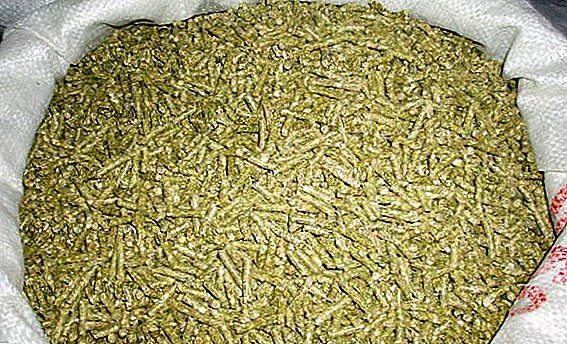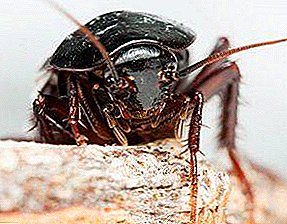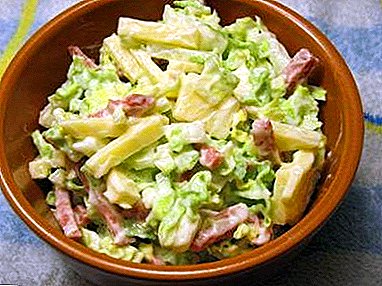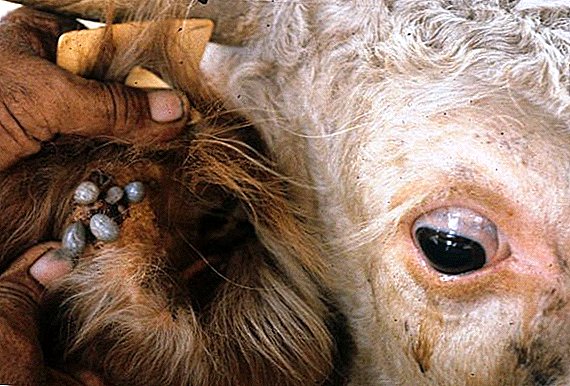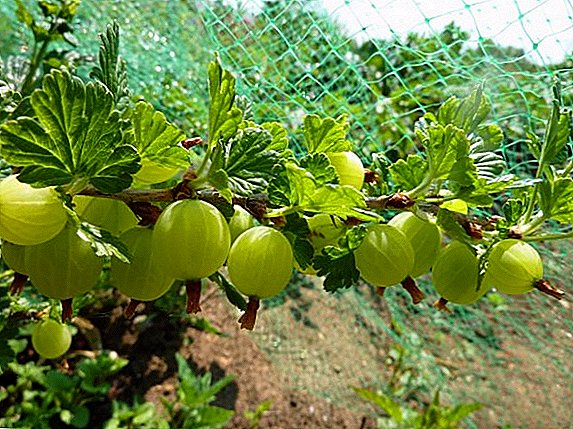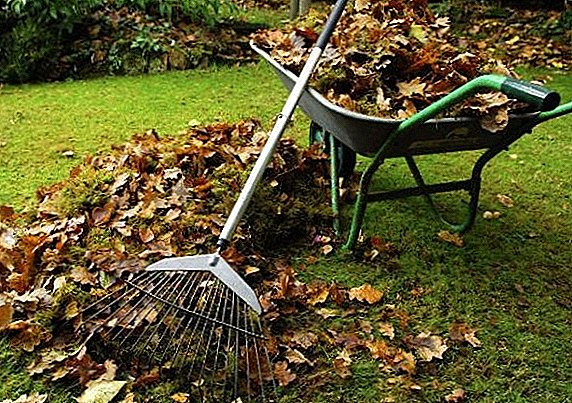 Spacious, flat grass cover on a country site is an excellent natural design for a recreation area, a background for flower beds and flower beds or a rock garden. Regardless of its purpose and size, the lawn needs regular cutting, fertilization, cleaning of leaves in the fall and weeds in the spring. Like all elements of landscape design, lawns require a variety of activities before leaving for the winter. A typical preparation plan includes haircuts, repairs and other types of work that will be discussed.
Spacious, flat grass cover on a country site is an excellent natural design for a recreation area, a background for flower beds and flower beds or a rock garden. Regardless of its purpose and size, the lawn needs regular cutting, fertilization, cleaning of leaves in the fall and weeds in the spring. Like all elements of landscape design, lawns require a variety of activities before leaving for the winter. A typical preparation plan includes haircuts, repairs and other types of work that will be discussed.
Preparing the lawn for winter
Autumn lawn is not often cut, and it is best to mow it for the last time in the year before frosts - in October. Watering is done if a long period of weather is sunny and dry (1 time per week). In cool weather, watering time increases to 1 time in 2 weeks. In the same period, fertilizers are applied, leaves and felt are removed, repairs are carried out to damaged areas.
Did you know? The lawn is a kind of "polyclinic" near you. Walking on it is recommended by manual therapists. The green color of the plants has a calming effect on the nervous system. The grass reduces dust levels and this is useful for allergies. One hectare of lawn can hold up 60 tons of dust.
Proper lawn watering
Preparing for the winter begins in September. If it is wet and rainy autumn, then water the lawn, of course, is not necessary. If the weather is sunny, hot and dry, then watering is done once a week. When moving the irrigation system, its location in one place at the time of irrigation should not exceed 20 minutes. With stationary drip irrigation, turn it on for half an hour to moisten the root system well. 
Familiarize yourself with the features of lawn watering: how to properly and how much water is needed for good grass growth.To prevent excessive moisture in the form of puddles, the lawn is watered with airborne irrigation. At the end of October, watering is stopped altogether in order to prevent the freezing of wet soil.
Top dressing grass
Lawn trim is not a particularly complex procedure, but there are a number of mandatory rules:
- The optimum condition of the fertilizer area is dry grass and the soil is wet.
- To spread fertilizer evenly, use a manual fertilizer spreader. The device consists of a bunker, gratings, screening particles of debris, and rotating disks that spray fertilizer.
- Two days after top dressing, the area must be watered in order to ensure that the part of the fertilizer that for some reason did not soak into the wet lawn at the time of application got into the soil.
Important! Do not apply fertilizer on dry or recently watered lawn. To make them pour in plenty of soil and wait a day until moisture is absorbed.In the autumn fertilizers are applied that help strengthen the root system - this is, first of all, phosphorus and potassium. Superphosphate will strengthen the roots and the growth of new shoots. Properly fertilized lawn by the end of the autumn should be a pale green color.
 Mechanization of fertilizer application to the site Potassium sulphate will protect plants from disease and improve their ability to absorb nutrients in the autumn-winter period. The introduction of wood ash will also be a useful fertilizer due to the trace elements it contains. Slaked lime introduced into the soil protects the site from fungal diseases.
Mechanization of fertilizer application to the site Potassium sulphate will protect plants from disease and improve their ability to absorb nutrients in the autumn-winter period. The introduction of wood ash will also be a useful fertilizer due to the trace elements it contains. Slaked lime introduced into the soil protects the site from fungal diseases.With a shortage of time to conduct various dressings, you can make a special concentrated fertilizer for lawns in the soil. It contains all the necessary trace elements in the soil.
Did you know? The first artificial mixtures for plants were created by river floods. So, the Egyptians noticed the effect of growing plants on sediment left by river water, and began to actively use them. And the first classification of fertilizers was made by the Roman scientist and landowner Columnel in the 1st century AD. er
How and why to do aeration
As the lawn develops and grows, the soil in it thickens, and the root system forms a single poorly ventilated and poorly developing layer. To add air to this layer, it is necessary to pierce it, thereby creating holes for breathing.  An aerator is a device that is designed to create punctures in turf. It can be mechanical and electrical. The simplest model for aeration can serve as a garden rake, which evenly pierce the soil.
An aerator is a device that is designed to create punctures in turf. It can be mechanical and electrical. The simplest model for aeration can serve as a garden rake, which evenly pierce the soil.  Sandals for aeration Also popular are sandals for aeration, which is a studded sole, which is worn with ordinary shoes on top and in this form moves around the area, evenly piercing the turf. In addition, you can purchase an electric or gasoline aerator.
Sandals for aeration Also popular are sandals for aeration, which is a studded sole, which is worn with ordinary shoes on top and in this form moves around the area, evenly piercing the turf. In addition, you can purchase an electric or gasoline aerator.  To understand whether the site needs aeration, you need to cut the sod with a spade. If it is more than 5 cm, then the procedure is necessary. A thick layer of the root system can interfere with the germination of fresh grass, and in the rain it retains moisture for too long, which contributes to the development of various pathogenic microflora and insect pests.
To understand whether the site needs aeration, you need to cut the sod with a spade. If it is more than 5 cm, then the procedure is necessary. A thick layer of the root system can interfere with the germination of fresh grass, and in the rain it retains moisture for too long, which contributes to the development of various pathogenic microflora and insect pests.
When to cut
It is time to cut a lawn if its height exceeds 10 cm.
Find out when and how to mow the lawn.
This should be done in such a way that about 5 cm of grass is left: this height of plants is optimal for wintering. The last haircut is performed no earlier than the beginning of October - before the frost. In the cold season, the lawn is not cut. Between the beginning of October and the frosts of cut grass there is time for independent warming and preparation for wintering.
How to mow a lawn
The lawn is cut with a lawn mower. The haircut is done in the morning in warm, dry weather. Places that are inaccessible to the lawnmower or uneven areas are trimmed with garden shears. The technique of cutting is to pass the section in strips: first move in one direction to the end of the section, then turn and pass the strip side by side in the opposite direction.
Did you know? The first grass clipper was invented in England in 1830 by Edwin Bading, although in fact he was creating a grass clipper for uneven hairs.
 It is not recommended to use a lawn mower with blunt knives. When purchasing this type of technology, pay attention to the presence of the cutting height adjustment function. The optimum height of grass is 5-6 cm. You can also use a trimmer for mowing: this device performs the same functions as a lawn mower, but it is also a compact and manual version of a grass care device.
It is not recommended to use a lawn mower with blunt knives. When purchasing this type of technology, pay attention to the presence of the cutting height adjustment function. The optimum height of grass is 5-6 cm. You can also use a trimmer for mowing: this device performs the same functions as a lawn mower, but it is also a compact and manual version of a grass care device.
When choosing a lawn mower should pay attention to the fact that they are electric and gasoline. It is also useful to learn how to mulch a lawn with a lawn mower.
Cleaning leaves
It is necessary to remove the leaves from the lawn as they fall, approximately 1 time per week. For cleaning, ordinary garden fan rakes with flat teeth are used. The working surface of such a rake is sliding, which speeds up the cleaning process.
You can also use a blower to clean the leaves. The tool blows the leaves into heaps with an air wave. When cleaning large lawns, courts and playgrounds, a garden vacuum cleaner is used: just like a home vacuum cleaner, everything that comes its way is sucked in. Collected leaves are placed in a bag attached to a vacuum cleaner. Garden models are designed for the use of packages of 20-30 liters.
Important! It is impossible to leave foliage on the lawn and it is not recommended to lay it in compost heaps. Fallen leaves can be spore carriers of various fungal diseases of trees.
Lawn Repair
In addition to cleaning the leaves, it is necessary to clean the lawn from "felt" - the so-called layer of dying old grass, crumbling vegetable debris and other organic residues. This layer is absolutely not useful for grass and serves as an excellent "house" for wintering various pests, fungi and mold. It is combed and removed by an ordinary garden rake.  If during harvesting you find areas with damaged grass, yellowed grass, bald spots, they are treated with fungicidal solutions. Then empty places are seeded again.
If during harvesting you find areas with damaged grass, yellowed grass, bald spots, they are treated with fungicidal solutions. Then empty places are seeded again.
The procedure for processing damaged areas:
- rake the area;
- mow down everything above 5 cm;
- aerate the area;
- with a metal rake we fluff up the soil in the “bald areas”;
- add peat substrate or nutrient mixture for fertilizing;
- sow seeds;
- gently level the rake.
Cleaning weeds
Weeds in the area appear as a result of the movement of weed seeds by wind, and are carried with the droppings of animals or birds. Such plants not only spoil the appearance of the lawn, but also draw moisture and nutrients from the soil.
Find out if there is grass that destroys weeds on the lawn.
Particularly relevant to weed control on a young annual lawn. The weed seeds remaining in the soil may sprout here or they will grow into shoots from the root system of the couch grass and other creeping plants. For the treatment of a young lawn, the main method of harvesting is to mow weeds before flowering.. It is undesirable to pick up weeds or use chemical methods - it damages the grass, but regular mowing weakens the root system of the weed and ultimately destroys it. Perennial grasses, such as dandelion, plantain, are removed after good watering in order to be able to pull out the root with minimal damage to the lawn. 
Did you know? In the 14th century in England, boiling water was used to combat lawn weeds, and the lawn itself consisted not only of grass, but also of flower beds and short shrubs.
Surface leveling
If bumps appear on the lawn, they need to be removed, as this causes problems when mowing the grass, and the plot does not look well-groomed. If swelling occurs, it is necessary to level the surface in this place. You need to roll up a dry surface with a roller with a shaft that weighs at least 60 kg. If the lawn mower is equipped with such a shaft, then with it you need to walk around the site and roll in the swollen places.
In small areas, you can trim the lawn cover with a knife and remove excess soil from under it, and then put the cut piece in place and pour water well. Lawn grass will take root, and the plot will be flat again.
Sowing empty plots
In order to sow bald spots on the lawn, it is necessary to determine the choice of time for sowing. The lawn should have enough time for acclimatization and preparation for winter, which means that the sowing should take place no later than the beginning of October. If the restoration work falls on July-August, then choose cooler days and morning hours for sowing.
Moorish lawn is the only species that needs to be mowed only once a year.
 Land for sowing is treated from weeds and residues of vegetation. It is advisable to remove the plants mechanically. Loosen compacted soil to improve the growth of lawn grass and nourish its root system. If the site is too developed root system of the previous grass, then perform its scarification. Next, plentifully watered the area, then add fertilizer fertilizer or add a peat substrate. Along with the substrate make and seeds. Then you need to gently level the area with a rake.
Land for sowing is treated from weeds and residues of vegetation. It is advisable to remove the plants mechanically. Loosen compacted soil to improve the growth of lawn grass and nourish its root system. If the site is too developed root system of the previous grass, then perform its scarification. Next, plentifully watered the area, then add fertilizer fertilizer or add a peat substrate. Along with the substrate make and seeds. Then you need to gently level the area with a rake.
The soil in places of introduction of new seeds should be hydrated. Therefore, it is necessary to control its condition, especially if it is sown in the hot season. The germination of young grass on the site will begin in 2 weeks.
Choosing grass for the site, you should familiarize yourself with the peculiarities of lawn care from a field-povitsa, white clover, red fescue, awl-shaped bratwinker, and meadow fescue.
It should be noted that a properly planted and well-groomed lawn does not require much attention to itself, is resistant to diseases, does not freeze out in winter and does not lose its attractiveness at any time of the year. To do this, you should properly perform seasonal activities, including feeding, watering, aeration, mulching and disease prevention.
Video: Lawn care in autumn, preparing for winter
Reviews




